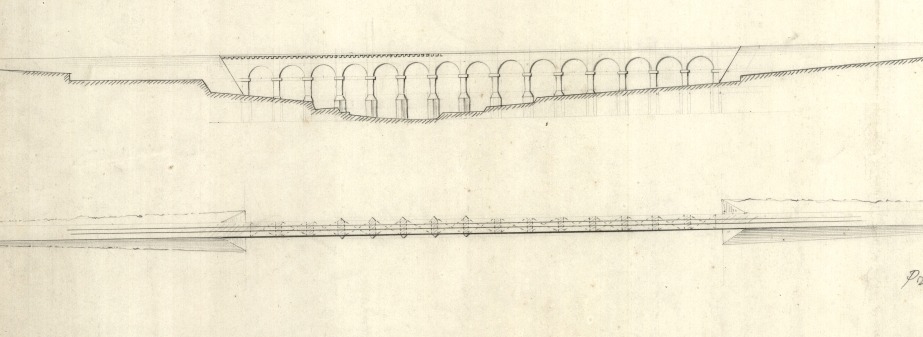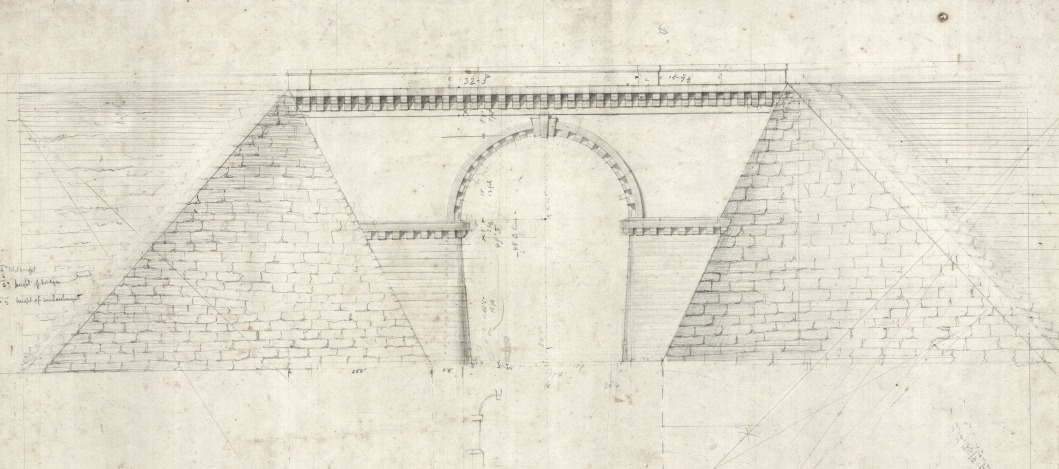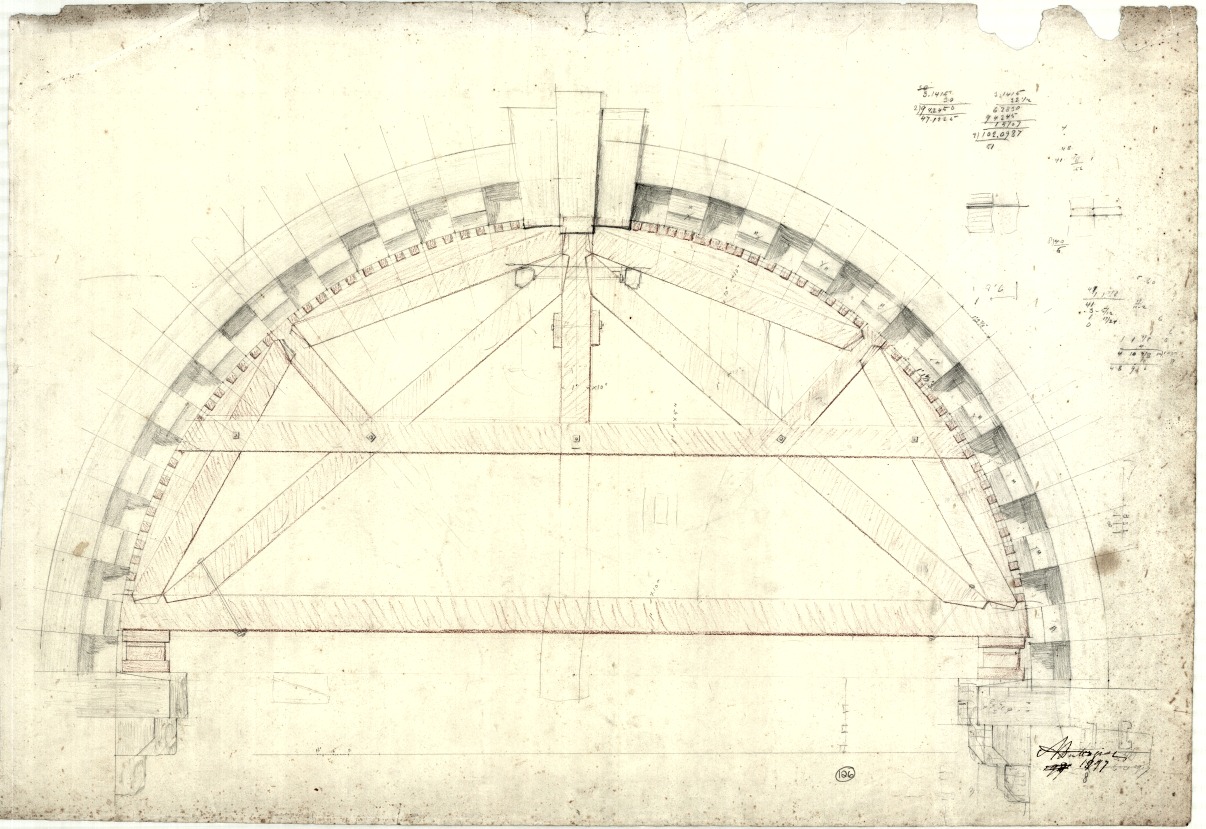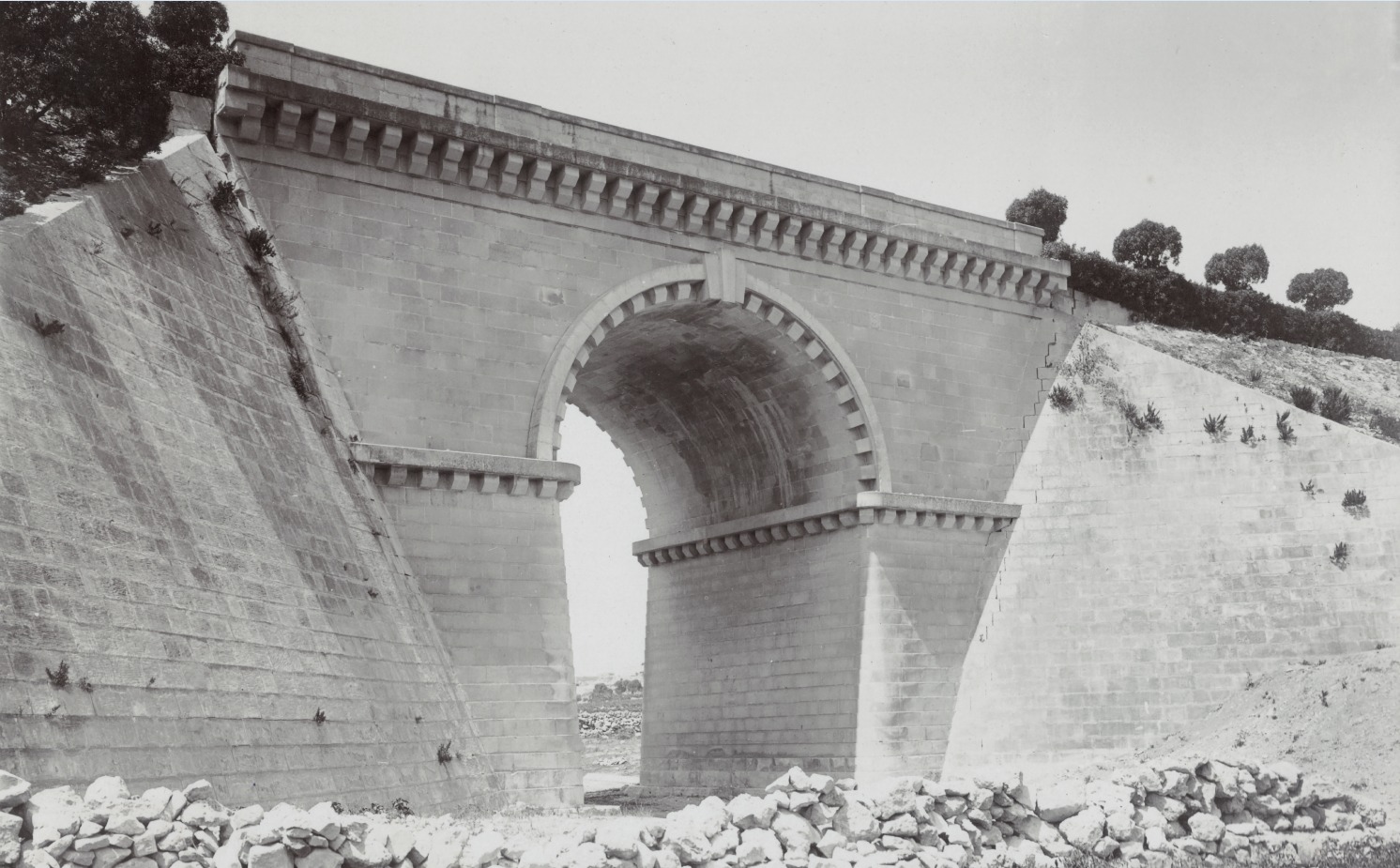Għeriexem bridge is arguably the most monumental structure on the Malta Railway. Helping bridge the valley between Mdina and Mtarfa it’s as much architectural as it is a work of engineering. When planned in 1897 it and the embankment across the valley had the potential to carry the line to the north of the island, but in practice works achieved little more than greatly improving access to Mtarfa barracks for the British Army and accommodation for two seemingly seldom-used railway sidings.

One of the original plans involved a narrow, elegant, fifteen-arch viaduct rather than the present chunky bridge. This was perhaps rejected on cost, but the narrowness of the intended structure made no accommodation for an adjacent roadway for troops at the barracks. Another drawing in the collections of the National Archives of Malta shows the timber centring used to construct the arch. The design of the bridge, with deep projecting cornices below the springing of the arch, allowed for the centring to be supported off them.

The extension to Museum station and Mtarfa opened in 1900. Already by 1912 the bridge or embankment had suffered some slumping and cracks in the abutments as seen in the photo. The cracks remain, but probably stabilised in the decades since completion. When it was proposed this and other photos of the railway were to be sent for publication in a British railway journal the Island’s Governor angrily intervened and had them immediately recalled on account of the perceived strategic military importance of railway infrastructure.
Today the bridge survives and, along with the embankment, Museum station building, and tunnel under Mdina, are Scheduled historic sites.



No responses yet